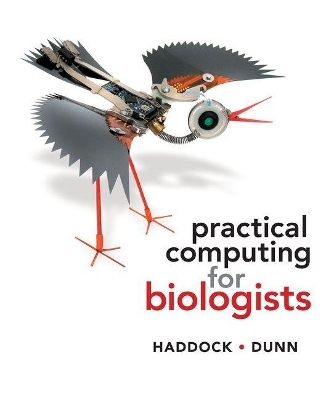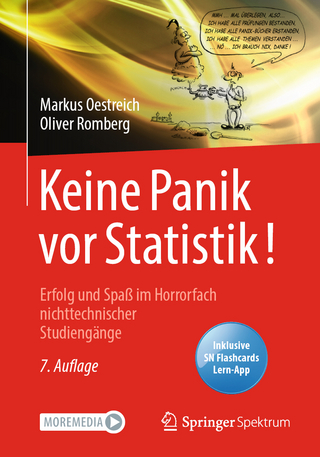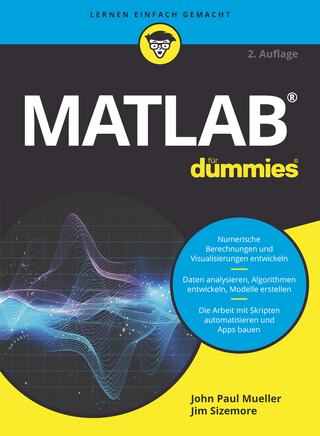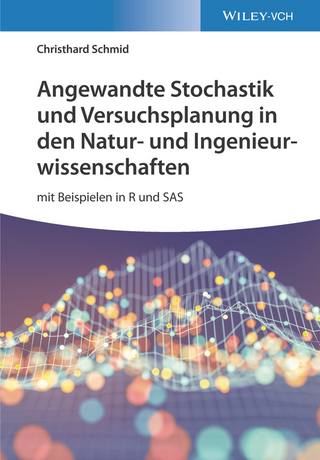
Practical Computing for Biologists
Oxford University Press Inc (Verlag)
978-0-87893-391-4 (ISBN)
Practical Computing for Biologists shows you how to use many freely available computing tools to work more powerfully and effectively. The book was born out of the authors' own experience in developing tools for their research and helping other biologists with their computational problems.
Practical Computing for Biologists shows you how to use many freely available computing tools to work more powerfully and effectively. The book was born out of the authors' own experience in developing tools for their research and helping other biologists with their computational problems. Many of the techniques are relevant to molecular bioinformatics but the scope of the book is much broader, covering topics and techniques that are applicable to a range of scientific endeavours.
Twenty-two chapters organized into six parts address the following topics (and more; see Contents):
* Searching with regular expressions
* The Unix command line
* Python programming and debugging
* Creating and editing graphics
* Databases
* Performing analyses on remote servers
* Working with electronics
While the main narrative focuses on Mac OS X, most of the concepts and examples apply to any operating system. Where there are differences for Windows and Linux users, parallel instructions are provided in the margin and in an appendix. The book is designed to be used as a self-guided resource for researchers, a companion book in a course, or as a primary textbook. Practical Computing for Biologists will free you from the most frustrating and time-consuming aspects of data processing so you can focus on the pleasures of scientific inquiry.
STEVEN HADDOCK is a Research Scientist at the Monterey Bay Aquarium Research Institute and adjunct Associate Professor at the University of California, Santa Cruz, USA, studying bioluminescence and biodiversity of gelatinous zooplankton. He came with a programming background to his graduate studies in Marine Biology, where he quickly realized the advantages that computing skills offered and felt compelled to help foster these abilities in others. He has developed many utilities and devices for research, including instruments to monitor bioluminescence from fireflies, a freezer monitoring system, a web-based conference registration database, and a PCR calculator for smartphones. In addition to teaching invertebrate zoology and writing a booklet to teach the technique of blue-water scuba diving, he has given tutorials in computing to students and administrators. His interest in education extends to his Bioluminescence Web Page (http://lifesci.ucsb.edu/~biolum/) and the Jellywatch.org citizen-science website (www.jellywatch.org). CASEY DUNN, an Assistant Professor at Brown University, USA, does research that has a large computational component but always in conjunction with work in the field and lab. His first interest in computers stemmed from building electronics, and he further developed his computational skills working in Silicon Valley while an undergraduate. As his data sets grew larger and larger during grad school and his postdoc, he found himself reaching back to his computer background more often. In the course of his own research and helping other biologists with their computational challenges, he became concerned about the mismatch between training opportunities and the real day-to-day computational problems biologists face. In addition to teaching invertebrate biology, evolution, and development, his educational activities include the websites siphonophores.org and creaturecast.org.
Before You Begin.- PART I: TEXT FILES.- Getting Set Up.- Regular Expressions: Powerful Search & Replace.- Exploring the Flexibility of Regular Expressions.- PART II: THE SHELL.- Command-line Operations: The Shell.- Handling Text in the Shell.- Scripting with the Shell.- PART III: PROGRAMMING.- Components of Programming.- Beginning Python Programming.- Decisions and Loops.- Reading and Writing Files.- Merging Files.- Modules and Libraries.- Debugging Strategies.- PART IV: COMBINING METHODS.- Selecting and Combining Tools.- Relational Databases.- Advanced Shell and Pipelines.- PART V: GRAPHICS.- Graphical Concepts.- Working with Vector Art.- Working with Pixel Images.- PART VI: ADVANCED TOPICS.- Working on Remote Computers.- Installing Software.- Electronics: Interacting with the Physical World.- APPENDICES.- Working with other Operating Systems.- Regular Expression Search Terms.- Shell Commands.- Python Quick Reference.- Template Programs.- Binary, Hex, and ASCII.- SQL Commands.- Index.
| Zusatzinfo | 538 p. |
|---|---|
| Verlagsort | New York |
| Sprache | englisch |
| Maße | 229 x 191 mm |
| Gewicht | 1180 g |
| Themenwelt | Mathematik / Informatik ► Mathematik ► Wahrscheinlichkeit / Kombinatorik |
| Medizin / Pharmazie | |
| Naturwissenschaften ► Biologie ► Allgemeines / Lexika | |
| ISBN-10 | 0-87893-391-3 / 0878933913 |
| ISBN-13 | 978-0-87893-391-4 / 9780878933914 |
| Zustand | Neuware |
| Haben Sie eine Frage zum Produkt? |
aus dem Bereich


